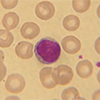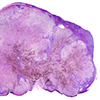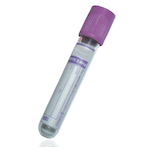
- Home
- Clinical Chemistry Tests
- Parathyroid Hormone (PTH)
Parathyroid Hormone (PTH) PTH4
Specimen Volume
1 ml whole bloodSample Preparation
Plasma must be separated and analysed within 48 hours of sample collection.
Turnaround Time
24 hoursSample Processing In Laboratory
Send immediately
Sample Stability
Plasma must be separated from cells within 48 hours of collection.
Store separated plasma at -20°C if analysis is delayed longer than 2 days
Please send separate EDTA tube if Full Blood Count Also Required
General Information
Parathyroid hormone (PTH) is formed in the parathyroid glands and secreted into the blood stream. Intact PTH consists of a single polypeptide chain containing 84 amino acids and has a molecular weight of approx. 9500 daltons. The biologically active N-terminal fragment has a half-life of only a few minutes.
Selective measurement of the (mainly) intact parathyroid hormone permits direct ascertainment of the secretory activity of the parathyroid glands. PTH, together with vitamin D and calcitonin, brings about mobilization of calcium and phosphate from the skeletal system and increases the uptake of calcium in the intestine and the excretion of phosphate via the kidneys. The constancy of the blood calcium level is ensured by the interaction of PTH and calcitonin. The secretion of PTH is inhibited by high calcium concentrations and promoted by low calcium concentrations. Parathyroid gland disorders lead to elevated or depressed blood calcium levels (hypercalcaemia or hypocalcaemia) brought about by a change in the secretion of PTH.
Detection of subfunctioning parathyroid glands (hypoparathyroidism) requires the use of a highly sensitive test in order to be able to measure PTH levels well below normal.
Hyperfunctioning of the parathyroid glands results in an increased secretion of PTH (hyperparathyroidism). Primary causes are adenomas in the parathyroid glands. In secondary hyperparathyroidism the blood calcium level is low as a result of other pathological states (e.g. vitamin D deficiency).
Notes
** **
Reference Range
2.7 – 11.1 pmol/L
(This reference range has been derived by assessment of literature and local data)
PTH should be interpreted in the context of calcium and albumin measurements. A PTH value inside reference limits in the presence of elevated corrected calcium values may indicate PTH excess.
Source of Reference Range
Abbott DiagnosticsSpecifications
- EQA Status: NEQAS
- EQAS Scheme: Yes
Link to Further Information
http://www.labtestsonline.org.uk/understanding/analytes/pth/tab/glanceRelated Tests
Calcium (adjusted) Magnesium (serum) Phosphate (serum) Vitamin D (25-OH VitD)Creation Date
Monday, 08 August 2011Modification Date
Monday, 03 October 2022General Information
Location of Laboratories
Copyright UHB Pathology 2018
Protection of Personal Information – Clinical Laboratory Services comply with the Trust Data Protection Policy and have procedures in place to allow the Directorate and it’s employees to comply with the Data Protection Act 1998 and associated best practice and guidance.
University Hospitals Birmingham medical laboratories at Queen Elizabeth Hospital, Heartlands Hospital, Good Hope Hospital and Solihull Hospital are UKAS (United Kingdom Accreditation Service) accredited to the ISO 15189:2012 standard. For a list of accredited tests and other information please visit the UKAS website using the following link: https://www.ukas.com/find-an-organisation/
- Molecular Pathology is a UKAS accredited medical laboratory No. 8759
- Biochemistry is a UKAS accredited medical laboratory No. 8910
- Haematology and Transfusion is a UKAS accredited medical laboratory No. 8784
- Clinical Microbiology is a UKAS accredited medical laboratory No. 8760
- Cellular Pathology is a UKAS accredited medical laboratory No. 10141
- Musculoskeletal laboratory is a UKAS accredited medical laboratory No. 9897
- Heartlands, Good Hope and Solihull Hospital pathology laboratories are a UKAS accredited medical laboratory No.8217.
Tests not appearing on the UKAS Schedule of Accreditation currently remain outside of our scope of accreditation. However, these tests have been validated to the same high standard as accredited tests and are performed by the same trained and competent staff.
For further test information, please visit the test database: http://qehbpathology.uk/test-database
For further information contact Louise Fallon, Quality Manager, 0121 371 5962
 Biochemistry
Biochemistry Haematology and Transfusion
Haematology and Transfusion Clinical Microbiology (Including Virology)
Clinical Microbiology (Including Virology) Cellular Pathology
Cellular Pathology General Information
General Information Molecular Pathology
Molecular Pathology